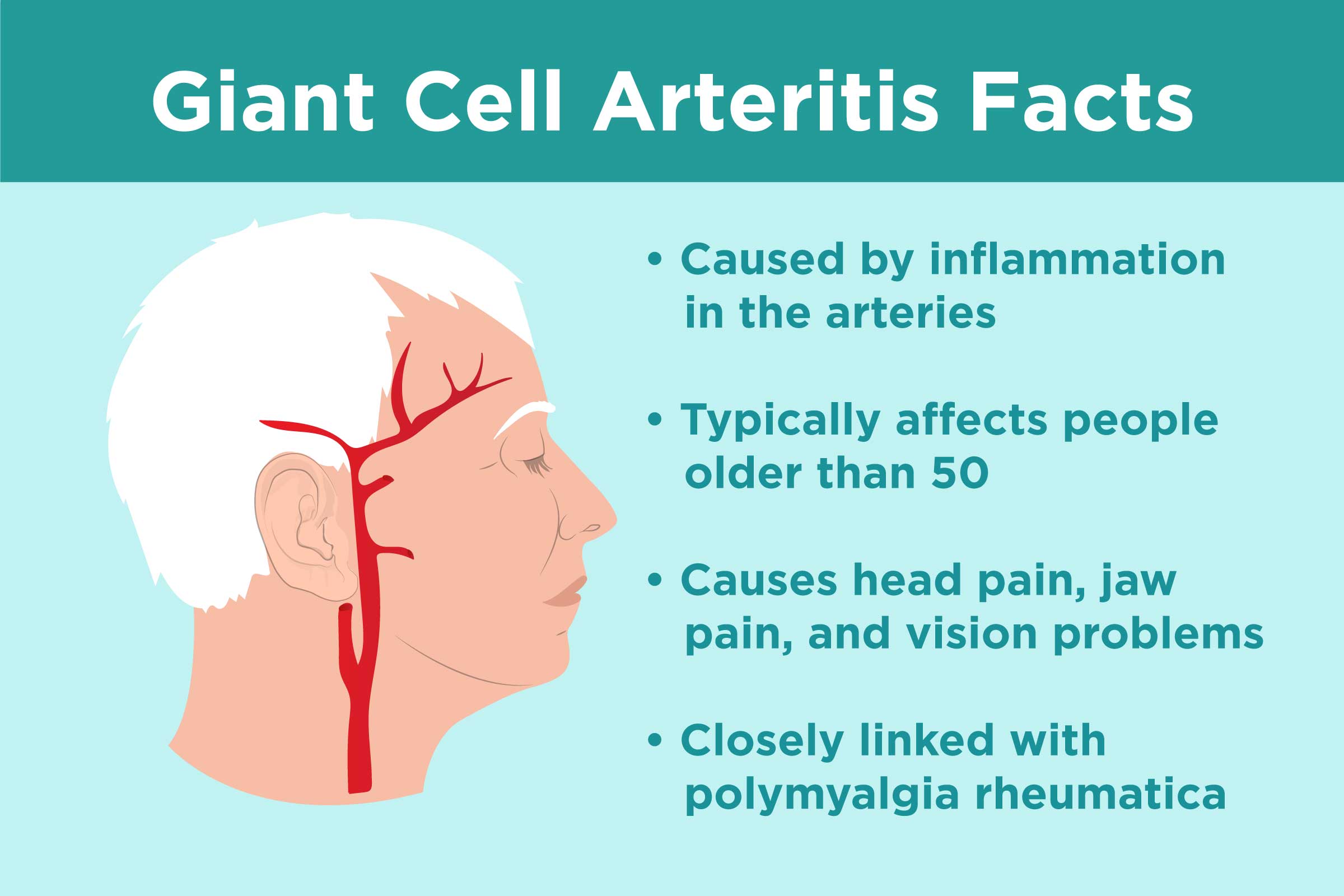Temporal Arteritis: Symptoms, Causes, Treatment
What are the symptoms of temporal arteritis?
Temporal arteritis, also known as giant cell arteritis, is a condition characterized by inflammation of the arteries, particularly the temporal arteries that run along the sides of the head. The condition primarily affects older adults and can lead to serious complications if not treated promptly. Symptoms of temporal arteritis can vary but may include:
- Headache: Persistent, severe headache, often in the temples, is a common symptom of temporal arteritis.
- Tenderness or pain in the scalp: The scalp, especially over the temples, may be tender to the touch or painful.
- Jaw pain or stiffness: Some people with temporal arteritis experience pain or stiffness in the jaw, especially when chewing.
- Vision problems: Temporal arteritis can cause vision changes, including double vision, blurred vision, or sudden vision loss, which can be permanent if not treated promptly.
- Flu-like symptoms: Some people may experience general symptoms such as fatigue, fever, loss of appetite, and weight loss.
- Other symptoms: Other symptoms can include scalp soreness, muscle aches, and joint pain.
It’s important to note that temporal arteritis can lead to serious complications, such as vision loss or stroke, if not treated promptly. If you or someone you know is experiencing symptoms of temporal arteritis, it’s important to seek medical attention immediately. A healthcare professional can perform tests to diagnose the condition and recommend appropriate treatment, which typically involves corticosteroid medications to reduce inflammation.
What are the causes of temporal arteritis?
The exact cause of temporal arteritis is not fully understood, but it is believed to be an autoimmune disorder, which means that the body’s immune system mistakenly attacks its own tissues. In temporal arteritis, the immune system targets the arteries, leading to inflammation.
Certain factors may increase the risk of developing temporal arteritis, including:
- Age: Temporal arteritis primarily affects adults over the age of 50, and the risk increases with age.
- Genetics: There may be a genetic predisposition to developing temporal arteritis, as it tends to run in families.
- Gender: Women are more likely to develop temporal arteritis than men.
- Ethnicity: Temporal arteritis is more common in people of Northern European descent.
- Other autoimmune disorders: People with other autoimmune disorders, such as rheumatoid arthritis or lupus, may have an increased risk of developing temporal arteritis.
- Infections: Some infections may trigger or contribute to the development of temporal arteritis, although more research is needed to understand this relationship.
It’s important to note that while these factors may increase the risk of developing temporal arteritis, not everyone with these risk factors will develop the condition. If you have concerns about your risk of temporal arteritis, speak with a healthcare professional for personalized advice.
What is the treatment for temporal arteritis?
The mainstay of treatment for temporal arteritis is corticosteroid medication, usually prednisone. The goal of treatment is to reduce inflammation in the arteries and prevent complications such as vision loss or stroke. Treatment typically involves:
- High-dose corticosteroids: Initially, a high dose of corticosteroids is often prescribed to quickly reduce inflammation. The dose is then gradually tapered down over several months to a lower maintenance dose.
- Long-term corticosteroids: In some cases, especially if symptoms are severe or if there is a risk of relapse, corticosteroid treatment may need to be continued for an extended period, sometimes for a year or more.
- Monitoring: Regular monitoring of symptoms, blood tests, and imaging studies may be recommended to assess the response to treatment and monitor for any complications.
- Other medications: In some cases, other medications such as low-dose aspirin or immunosuppressive drugs may be prescribed to help reduce inflammation or prevent complications.
- Lifestyle modifications: Maintaining a healthy lifestyle, including regular exercise, a balanced diet, and not smoking, can help manage the condition and reduce the risk of complications.
It’s important for people with temporal arteritis to work closely with their healthcare team to monitor the condition and adjust treatment as needed. Untreated temporal arteritis can lead to serious complications, so prompt and appropriate treatment is essential.




